- Home
- Don Pendleton
Orbiting Omega
Orbiting Omega Read online
Annotation
Midnight. Suddenly the Moscow sky bursts into broad daylight. Eight hours later a similar flash also bathes Washington D.C., in its glaring spill.
Twenty-five thousand miles above the two capitals, exploding hydrogen warheads have ruptured the night. In the name of peace, a misguided U.S. scientist has cracked the access code to an orbiting missile and detonated two of its MIRV warheads.
And that is just a warning.
Mack Bolan, destined to patrol the desolate hinterland of terrorism, learns of this horrifying event from a secret link. Thermonuclear doom! The words echo in The Executioners mind as he assaults the scientists hissing snakepit.
* * *
Don Pendleton's
1
2
3
4
5
6
7
8
9
10
11
12
13
14
15
16
17
18
19
20
21
Epilogue
The Turning Point
* * *
Don Pendleton's
Orbiting Omega
Technology does not improve the quality of life; it improves the quantity of things. Improving the quality of life requires the application of wisdom.
Neil A. Armstrong
There can be no respect for a cause that seeks its victory through the suffering of innocents. And there can be no dignity for a "warrior" who seeks the easy prey of unarmed civilians.
Mack Bolan
In recognition of all those experiencing the rigors of basic training. Hang in there!
Special thanks and acknowledgment to Chet Cunningham for his contributions to this work.
1
A 5-round burst of screaming lead hornets turned the darkly silent Arizona landscape into a hostile environment. Mack Bolan executed a face-down dive to a rocky ledge.
The Executioner scowled. No one knew he was coming up here tonight. He had left his vehicle two miles back and walked in, moving so silently that not even the horned toads and night-crawling tarantulas had enough warning to scurry out of his way.
But even with all his precautions, someone knew he was here.
In the quarter-moon dimness Bolan stared at the surrounding harsh, dry land. He was in the low country southwest of Phoenix, in an area called the Sand Tank Mountains. As he stood and began to move, five more chattering rounds whined over his head. He recognized the snapping sound of an M-16's output: 5.56mm sizzlers.
No one could see him there in the gloom. No one could have heard him walk in. Yet the automatic fire was aimed within a few feet of his location.
That could only mean they were using electronic vibration sensors, an electric warning fence. He hit the ground again and crawled ahead, feeling around for a small rock. He found one and threw it ten yards to his right. Before the stone stopped rolling, a burst of automatic-rifle fire peppered the air above the area where he had pitched the rock.
The blistering M-16 rounds did not hit the ground. They were firing high. Bolan reasoned that the sensors had detected the intrusion and warned someone above. So now, up there on top of the little mesa, they knew for sure an intruder was approaching. That would make it more interesting.
At least the defenders didn't have infrared spotting scopes, which would have taken away the dark, making him visible. He was thankful for one small advantage.
Bolan crouched, then stood, moving toward the access route that he had selected just before dusk by using a twenty-power scope. If he had to climb to the top of the mesa, this was the best way and evidently the most heavily defended.
The Executioner continued forward softly over the rocky soil to reduce the vibrations his boots transmitted to the ground. If he walked lightly enough the sensors would not be able to track him. His stealth lasted two minutes, then his foot slipped and kicked free a rock that tumbled down the slope. Bolan crouched low.
A rattle of automatic-rifle fire came from above and this time from more than one position. Three different sensors must have picked up the path of the rock as it rolled downward. Bolan looked above and could see the winking muzzle-flashes.
Damn fast reaction time. They must have professionals on top. Bolan wondered how many men would be defending the strongpoint? A dozen, maybe twenty?
The odds did not bother him. The Executioner usually worked alone and almost always against big odds. He was ready and back in action.
Five minutes later he was at the cleft, a twenty-yard-long stretch of boulders that formed a natural passage from the shelf he was on to the next higher one. It also was in a direct line of sight from the top of the mesa. That could be fatal.
At least he had not triggered any more sensors. Mack Bolan had no desire to close out his Executioner's career on this Arizona wasteland, cut down by some chance round fired blindly in the middle of the night.
A diversion — that was what he needed.
Bolan unhooked two grenades from his webbing, and when he was at the start of the access route, he threw the small bombs as far to the left as he could. When the second one was still in the air, Bolan ran around the first boulder, along what looked surprisingly like a trail up the slot.
The grenades exploded and brought three responses from the automatic rifles to the left. Then a new deeper sound came, as single-round rifle slugs splattered lead on the rocks ten yards to his right, whining into the distance. Seven of the rounds boiled in near him, after Bolan slid behind a protective granite slab to wait out the fusillade.
When the last shot faded, he left the safe position and moved upward cautiously. His immediate goal was to get to the top of the mesa wall and secure the facility before dawn. With daylight there might be Air Force, NASA and Army assault troops coming in from all directions, dropping in by chopper and probably ruining any evidence left up there.
Bolan also hoped to surprise any defenders or stragglers acting as rear guards and get some vital information from them. He had not counted on a stubborn defense like this from what must surely be only a temporary location.
Now it seemed he would have his share of a firefight before he got to the top. The Executioner was prepared. He carried a fully automatic Ingram Model 10 submachine gun on a cord around his neck. Across his back was slung a Childers experimental battle automatic shotgun with a specially shortened barrel.
The Childers was only eighteen inches long overall, had a forward-curving, 20-round magazine for 12-gauge ammo. A slightly rear-slanting front-mounted grip gave a firm second handhold on the automatic shotgun pounder.
This weapon was so new it was still a prototype, but it had worked extremely well for Bolan in tests. He had it loaded with double-ought buck rounds. It could fire single shot or full automatic, it had a forward-moving barrel and fixed breech block, and empty rounds exited to the rear of the magazine.
Over his battle-black skinsuit Bolan wore combat webbing that held two remaining grenades and a lightweight Colt Commander .45. A K-Bar fighting knife and a dozen other small combat surprises completed his arsenal. The Executioner did not have a long gun on this mission. He would not need one.
He moved silently, slower, but with more respect for the early-warning system they had planted. He deduced it was not just a "fence" but must be an interconnected series of rings and panels. That sort of a warning setup was difficult to devise and expensive to install.
The existence of this facility proved that this was not a nickel-and-dime operation. Any outfit that could electronically steal an orbiting communications satellite and then viciously kick it out
of orbit so it dropped into the atmosphere and streaked across the U.S. sky in prime viewing time as a twenty-million-dollar blazing comet, must have big-money backing. He still had not figured all the angles to explain why anyone would deliberately ruin such valuable and expensive hardware and disrupt worldwide communications.
Bolan worried about his next move toward the summit. The mesa he was climbing was not high or spectacular. But what was on top was the important part.
To his right he saw the forty-foot-wide "grand highway" that sloped gradually the last two hundred feet to the crest. It was too easy. And he was sure it would be staked with sensors and might be mined as well, presenting a perfect concentration point for massed enemy fire.
Instead, Bolan went for his next choice, straight up the crumbling sides of the forty-degree slope just ahead. It would be a two-hundred-foot climb to what had looked through the scope like a temporary rock wall around the rimrock of the mesa.
He had estimated that the flat area on the summit was less than an acre in size. But enough electronic equipment had been flown in there to capture and destroy the communications satellite.
Bolan threw a rock upward onto the broad open path and listened as an automatic rifle fired from above and scrambled the air across the slope with a firestorm of sizzlers. Again he could see the flashes from the hidden guns. The rounds went high.
Bolan moved faster, more deliberately. Any trip wires along here could be fatal — they would be invisible in the darkness. Touching a wire with his foot might trigger a flare, a grenade or a deadly antipersonnel mine.
He had seen enough of all of them in Nam for a lifetime.
The Arizona night was strangely quiet. Bolan wondered what the defenders were doing, thinking. He had not attempted to confuse them by a series of probes. He was moving straight up the hill to do battle.
So far he held a minor strategic advantage: he had not fired a shot. To do so would give away his exact position, and the defenders could concentrate fire on that spot rather than wait for a sensor reaction.
Bolan reached behind his back and loosened the battle shotgun so he could swing it around for immediate action. He had never seen a handheld weapon chew up targets the way the Childers had. Amazing.
Bolan felt a wire on his right boot, but by the time he jerked his foot back he heard the wire snap and the instantaneous sharp crack of a small charge.
The Executioner rammed himself against the rocks, waiting for the explosion. Five seconds later he lifted his head and heard a familiar "pop" high overhead. Flare.
He froze, holding one hand over his closed eyes, but even so he could see the brilliant white light that blossomed from the parachute flare as it burned with blinding intensity, snapping his formerly wide-open pupils into pinpoints, reducing his vision to zero.
When the deadly, twenty-second burn was over and he could no longer see the light through his fingers, Bolan opened his eyes and let them adjust to the darkness again.
Noise. That was the problem. There was no battle noise, nothing to indicate an attack, no men's voices, no confused talk, yells back and forth or any commands being barked. It was not like any battle Bolan had ever been in.
Either the men on top were seasoned veterans or they were combat virgins and so frightened they were afraid to talk. That worried him. Either group would be particularly dangerous in a fight.
Bolan's vision reverted to normal and he made a run up the slope, not worrying about the noise factor now. He was under the lip of a small overhang that would be hard to fire at from the wall. He scrambled upward, clawing at the rocks, pulling himself up now hand over hand.
When he was ten feet short of the top of the wall, he stopped. Again there was utter silence, not even a nightbird's call or a coyote's howl, only the gentle sighing of the Arizona desert night wind around the rimrock.
Bolan shifted his forward movement twenty feet to the left, where the slope was more gradual and the wall on top appeared to be slightly lower. He pulled up the Ingram, held it in his right hand and put the fire-selector lever on full automatic, then he ran for the wall.
Curiously, this time there was no challenging fire. They should have had a string of final warning sensors along here. He was five feet from the top of the wall and breathing hard. Then another two steps and he thrust one hand over the parapet. With a jump he heaved his body to the top of the rock jumble and rolled over, his finger still on the submachine gun's trigger, his eyes searching for danger, targets.
Nothing.
In the gloom he could see no one.
There was no sound of human activity around the top of the parapet.
He stood and ran along the wall. Twenty feet down he came to a gun mount, carefully set up with sandbags. It was an M-16 with a drum magazine that held seventy-six rounds. All sandbagged in and ready to fire.
Bolan frowned as he lowered the Ingram. A weapon ready but no gunner. The men must have pulled out on command.
The Executioner quickly circled the hilltop fort. There was no one anywhere, no human defenders were on top of the desert tableland.
Now he saw a shack in the center. It was a prefab unit, portable and new looking, not desert-sun weathered. Bolan ran to it on a zigzag course but drew no fire. He tested a door, found it unlocked and pushed it inward. It swung open on oiled hinges.
From inside came the hushed throb of a soundproofed diesel engine. Bolan struck a match and held it high. He saw a diesel engine running a generator. A bank of batteries sat to one side and beside them, blinking in the sudden light, a foot-long Gila monster. He was urging the lizard out the door when he noticed a light bulb with a pull-chain switch overhead before his match burned out.
He jerked the switch downward and light flooded the interior of the shed. Now he would make a closer inspection. A workbench on one side held a breadboard device filled with wires and electronic gear. The breadboard had dozens of sets of complicated switches and relays, which were all connected on one side to a black box that had an antenna leading out a small window. To the other side was another black box that held more switches, relays and other electronic gear.
Bolan shook his head as he contemplated the display before him.
In a flash he realized what it all meant. It could not be! But it was.
Bolan ran outside and picked a heavy rock beside the closest mounted M-16. He saw that the weapon was anchored firmly in place. He also noted that the gun had some special equipment and two wires leading from it into the dust at his feet.
The Executioner tossed the rock over the side. He heard it rolling downhill. Just beyond the first shelf the rock bounced and kept going. Something clicked beside him and at once the M-16 chattered off a 5-round burst.
Bolan snorted in frustration. He had put in a dozen hours planning and sneaking up on an empty fortress, one that was undefended except by electronic sensors and radio-relay-triggered weapons.
It was a complex setup, but would be simple for the electronic genius involved here. The sensors planted below were tiny broadcasting sets that picked up vibrations, broadcast the intrusion to the radio in the shack, which sent a message by wire to the closest weapon, firing it by remote control.
Not a single human defender was needed on the whole blasted mesa. Something else bothered Bolan. He had been fired at, but missed. Even on the broad highway area the rounds had been high over a man's head. Another irony. The person who designed this little setup had built in another safeguard. No matter how many troops stormed up the mountain, and no matter how careless or poorly trained they were, the automatic fire had been carefully aimed so not a single round could possibly harm any attacker.
Sound and fury with a purpose. But what was the purpose?
Bolan hurried back to the shack and searched it. At first he found nothing important. It had been systematically stripped of all identifying marks and papers.
He checked his watch: 0330 hours, another two and a half hours until dawn, when the reported assault teams would arr
ive by land and chopper. They would probably probe first with land troops, then attempt a helicopter strike.
Bolan searched the shack again, inch by inch. Half an hour later he found near the door a scrap of paper wedged into the floorboards. There were numerals on it, some kind of a rubber stamp impression and a series of four words. He pocketed the slip of paper and kept looking.
Bolan took the cover off the black box and found serial and model numbers that he copied in a small notebook from a slot pocket in his skinsuit. Next he went outside and wrote down the serial numbers from three of the M-16s. Finally he looked under each sandbag holding down the weapons. He replaced the bags exactly as they had been. He wanted to keep the surprise intact for the Army and NASA people.
On the next to last of the twelve gun mounts, he found a matchbook cover under one of the sandbags. It was from the Stag and Stallion bar in Winslow, Arizona. Bolan pocketed the cover. His search was ended.
The Executioner vaulted the low wall and walked down the slope away from the mesa. He had a two-mile trek back to his rented vehicle. He went through the sensors and heard the automatic weapons firing from above and knew the rounds were at least twenty feet over his head.
Bolan wished he had time to wait to see how NASA and the assault troops fared against the mock defenders. There would be a lot of red military faces. But he had less than an hour to get out of this area and back to the public highway before he met any of the ground troops that he was certain would come in by truck.
Mack Bolan was moving again, on his own, not directed or instructed by anyone, answerable to no man. And he wouldn't quit until he found out the reason for the twenty-million-dollar prank, until he located the perpetrators and made sure that such a theft did not endanger the U.S. space program.
2
As Bolan drove toward the highway he sent a silent message of thanks to Aaron "The Bear" Kurtzman back at Stony Man Farm. Kurtzman was still there, paralyzed from the waist down by KGB assassins when they had shot up the farm trying to kill Colonel John Phoenix. But Kurtzman had survived, confined to a wheelchair, with the Stony Man Farm computers his sole responsibility.

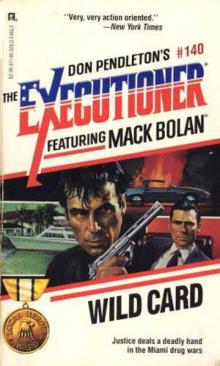 Wild Card
Wild Card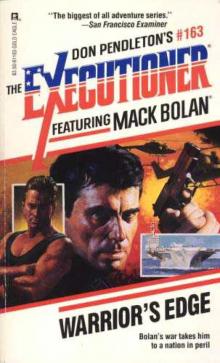 Warrior's Edge
Warrior's Edge Blood Vortex
Blood Vortex Lethal Vengeance
Lethal Vengeance Killing Kings
Killing Kings Cold Fury
Cold Fury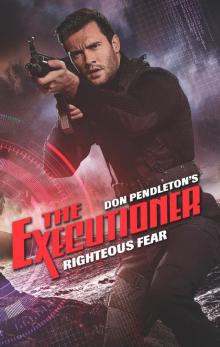 Righteous Fear
Righteous Fear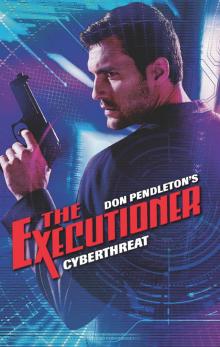 Cyberthreat
Cyberthreat Stealth Assassin
Stealth Assassin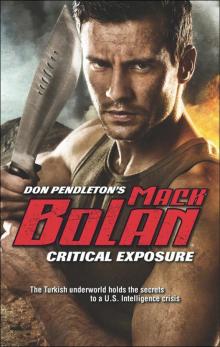 Critical Exposure
Critical Exposure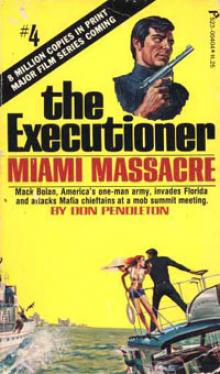 Miami Massacre te-4
Miami Massacre te-4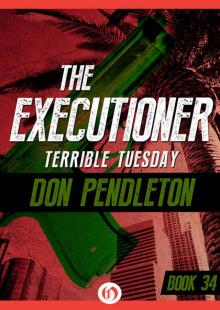 Terrible Tuesday
Terrible Tuesday Dying Art
Dying Art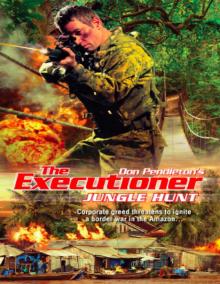 Jungle Hunt
Jungle Hunt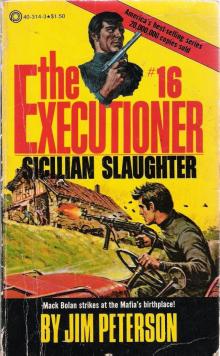 Sicilian Slaughter
Sicilian Slaughter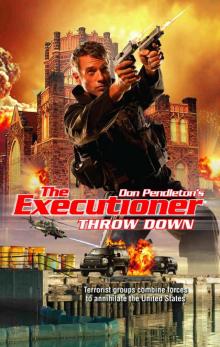 Throw Down
Throw Down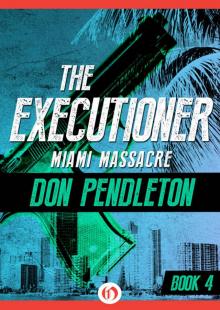 Miami Massacre
Miami Massacre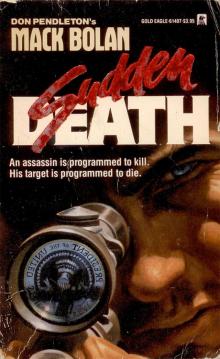 Sudden Death
Sudden Death Panic in Philly
Panic in Philly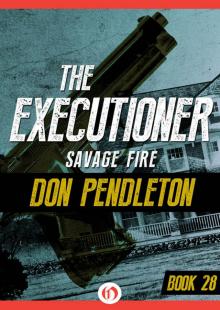 Savage Fire
Savage Fire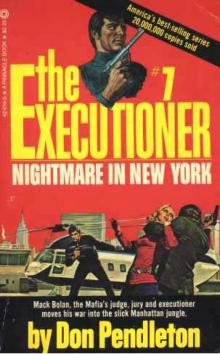 Nightmare in New York te-7
Nightmare in New York te-7 Omega Cult
Omega Cult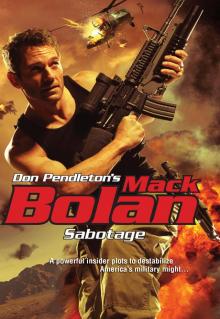 Sabotage
Sabotage Viral Siege
Viral Siege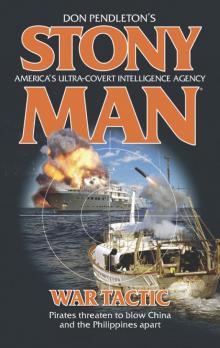 War Tactic
War Tactic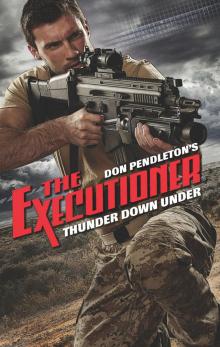 Thunder Down Under
Thunder Down Under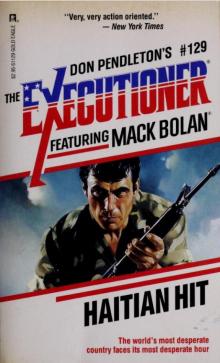 Haitian Hit
Haitian Hit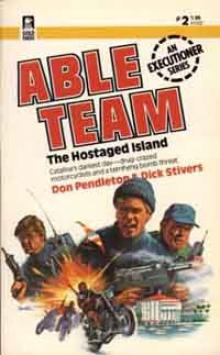 The Hostaged Island at-2
The Hostaged Island at-2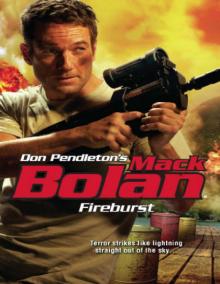 Fireburst
Fireburst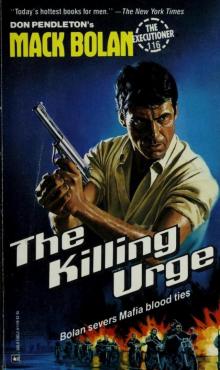 The Killing Urge
The Killing Urge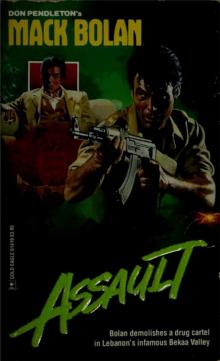 Assault
Assault Ashes To Ashes: Ashton Ford, Psychic Detective
Ashes To Ashes: Ashton Ford, Psychic Detective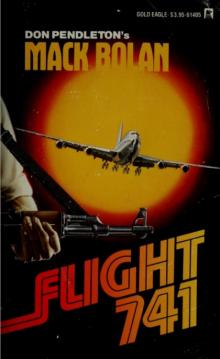 Flight 741
Flight 741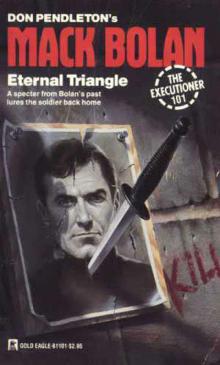 Eternal Triangle
Eternal Triangle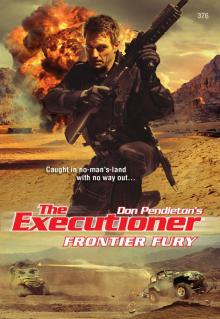 Frontier Fury
Frontier Fury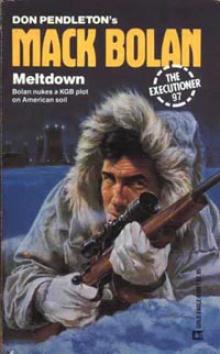 Meltdown te-97
Meltdown te-97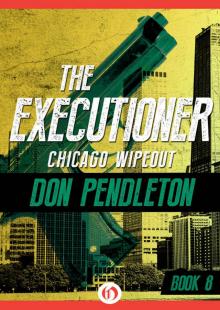 Chicago Wipeout
Chicago Wipeout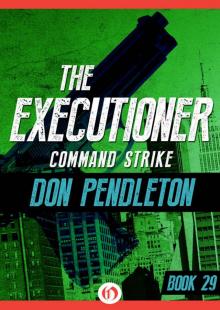 Command Strike
Command Strike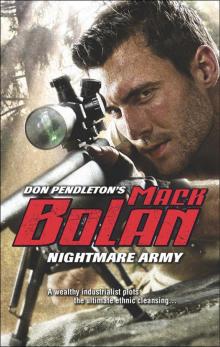 Nightmare Army
Nightmare Army Ivory Wave
Ivory Wave Combat Machines
Combat Machines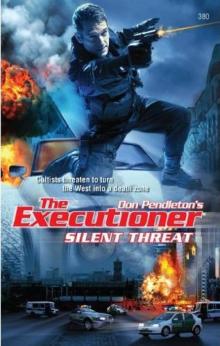 Silent Threat
Silent Threat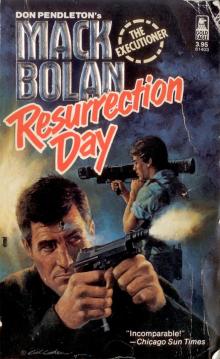 Resurrection Day
Resurrection Day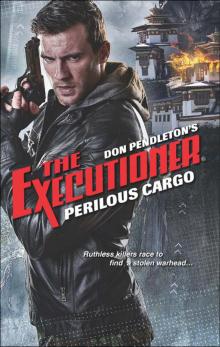 Perilous Cargo
Perilous Cargo Syrian Rescue
Syrian Rescue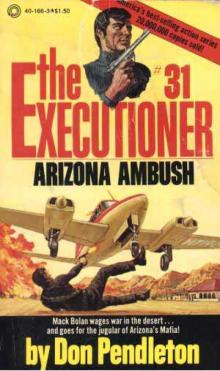 Arizona Ambush te-31
Arizona Ambush te-31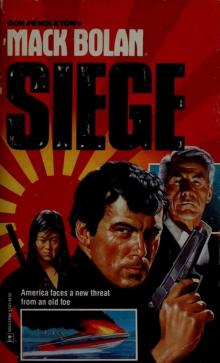 Siege
Siege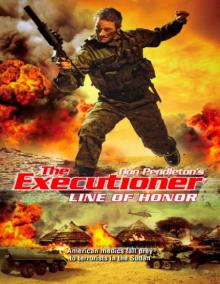 Line of Honor
Line of Honor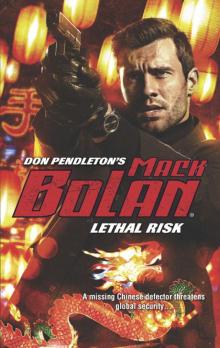 Lethal Risk
Lethal Risk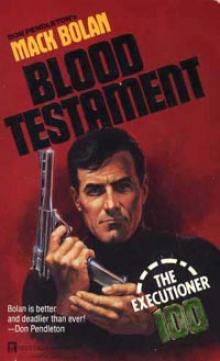 Blood Testament te-100
Blood Testament te-100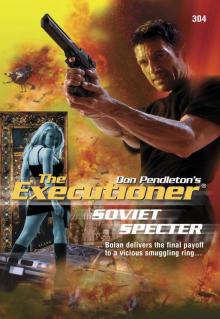 Soviet Specter
Soviet Specter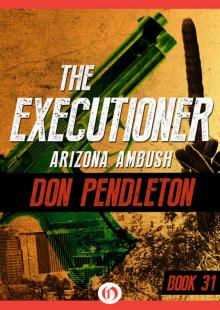 Arizona Ambush
Arizona Ambush Fatal Prescription
Fatal Prescription Deep Recon
Deep Recon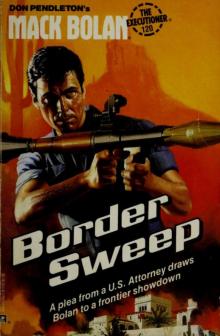 Border Sweep
Border Sweep Life to Life
Life to Life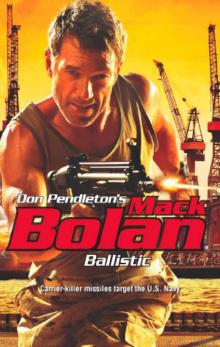 Ballistic
Ballistic Hellbinder
Hellbinder Time to Time: Ashton Ford, Psychic Detective (Ashton Ford Series Book 6)
Time to Time: Ashton Ford, Psychic Detective (Ashton Ford Series Book 6)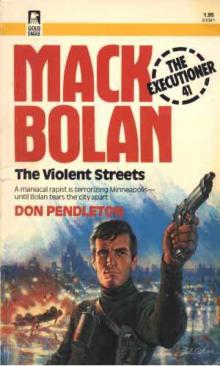 The Violent Streets te-41
The Violent Streets te-41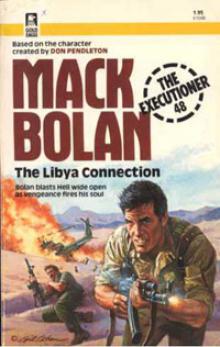 The Libya Connection te-48
The Libya Connection te-48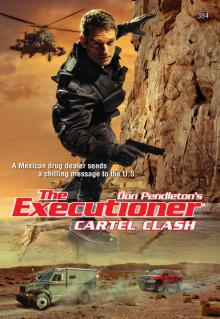 Cartel Clash
Cartel Clash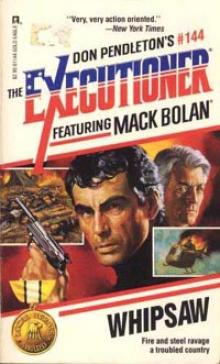 Whipsaw te-144
Whipsaw te-144 Blood Rites
Blood Rites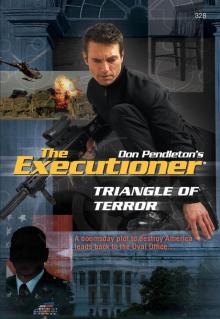 Triangle of Terror
Triangle of Terror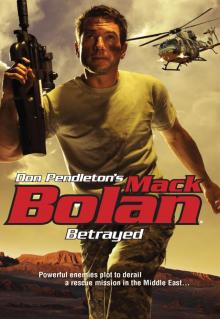 Betrayed
Betrayed San Diego Siege
San Diego Siege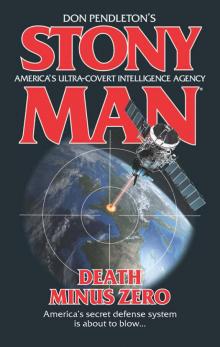 Death Minus Zero
Death Minus Zero Arctic Kill
Arctic Kill Mind to Mind: Ashton Ford, Psychic Detective
Mind to Mind: Ashton Ford, Psychic Detective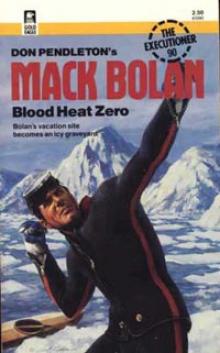 Blood Heat Zero te-90
Blood Heat Zero te-90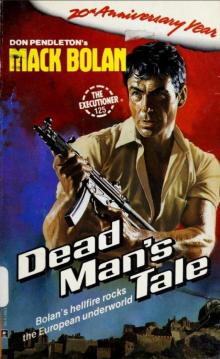 Dead Man's Tale
Dead Man's Tale Sunscream te-85
Sunscream te-85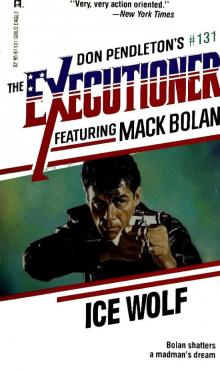 Ice Wolf
Ice Wolf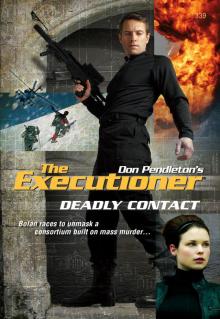 Deadly Contact
Deadly Contact The Cartel Hit
The Cartel Hit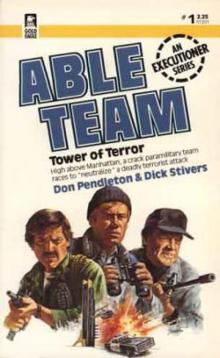 Tower of Terror at-1
Tower of Terror at-1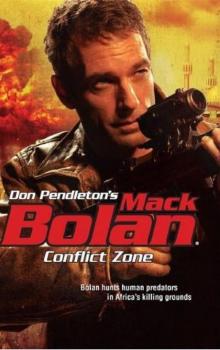 Conflict Zone
Conflict Zone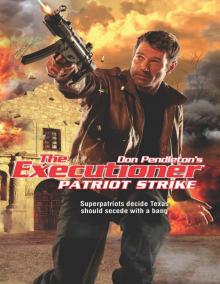 Patriot Strike
Patriot Strike Point Blank
Point Blank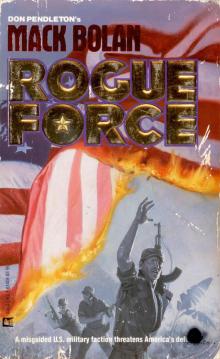 Rogue Force
Rogue Force Patriot Play
Patriot Play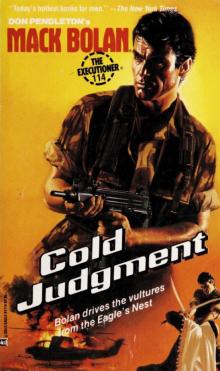 Cold Judgment
Cold Judgment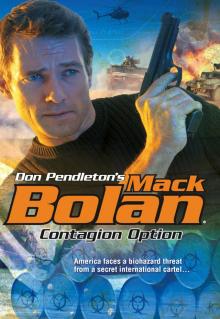 Contagion Option
Contagion Option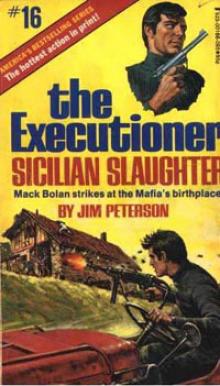 Sicilian Slaughter te-16
Sicilian Slaughter te-16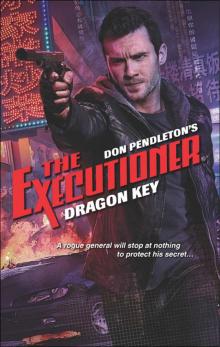 Dragon Key
Dragon Key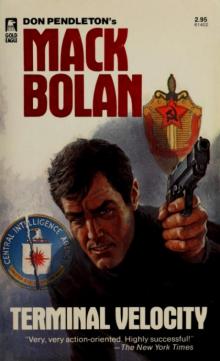 Terminal Velocity
Terminal Velocity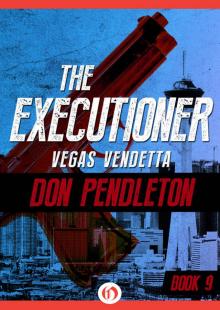 Vegas Vendetta
Vegas Vendetta Ashes To Ashes
Ashes To Ashes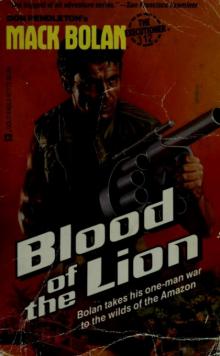 Blood of the Lion
Blood of the Lion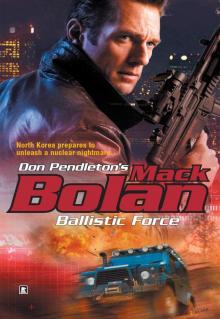 Ballistic Force
Ballistic Force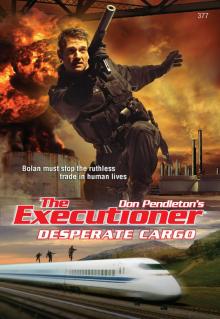 Desperate Cargo
Desperate Cargo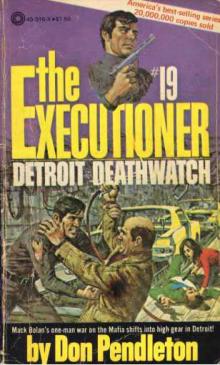 Detroit Deathwatch te-19
Detroit Deathwatch te-19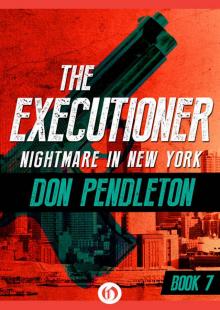 Nightmare in New York
Nightmare in New York Killpath
Killpath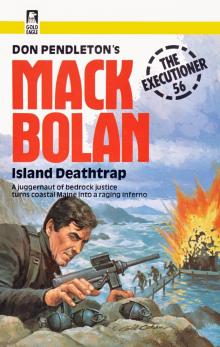 Executioner 056 - Island Deathtrap
Executioner 056 - Island Deathtrap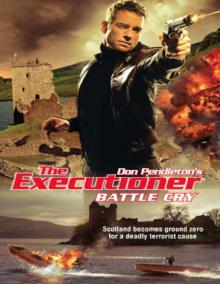 Battle Cry
Battle Cry Don Pendleton - Civil War II
Don Pendleton - Civil War II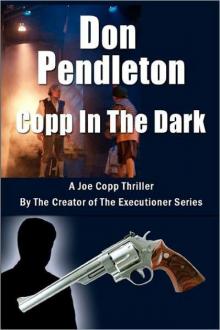 Copp In The Dark, A Joe Copp Thriller (Joe Copp Private Eye Series)
Copp In The Dark, A Joe Copp Thriller (Joe Copp Private Eye Series) China Crisis (Stony Man)
China Crisis (Stony Man)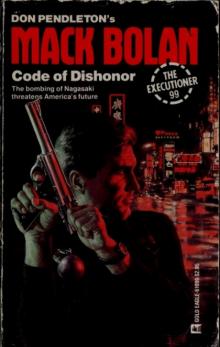 Code of Dishonor
Code of Dishonor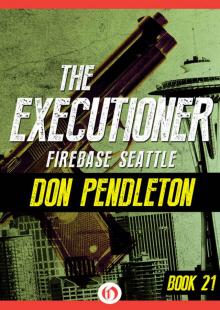 Firebase Seattle
Firebase Seattle Hard Targets
Hard Targets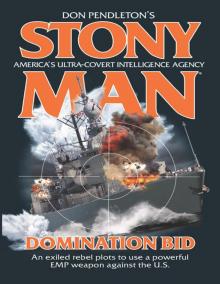 Domination Bid
Domination Bid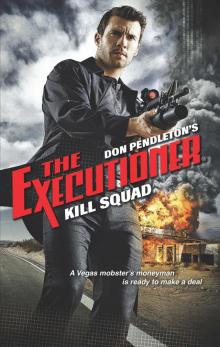 Kill Squad
Kill Squad Slayground
Slayground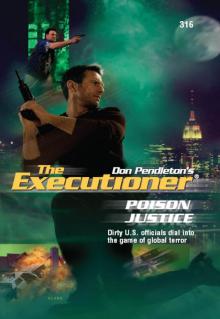 Poison Justice
Poison Justice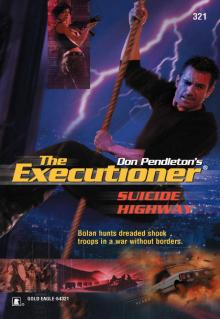 Suicide Highway
Suicide Highway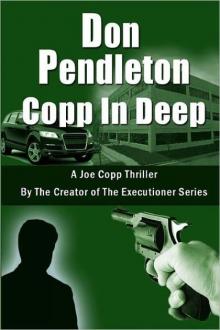 Copp In Deep, A Joe Copp Thriller (Joe Copp Private Eye Series)
Copp In Deep, A Joe Copp Thriller (Joe Copp Private Eye Series)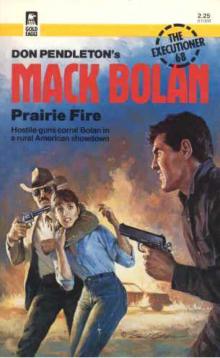 Prairie Fire
Prairie Fire Ninja Assault
Ninja Assault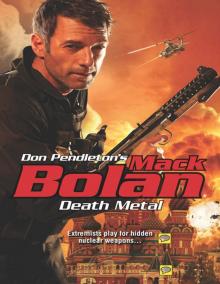 Death Metal
Death Metal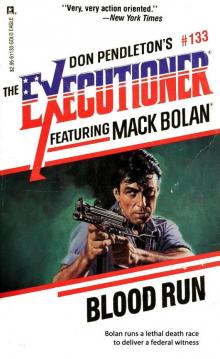 Blood Run
Blood Run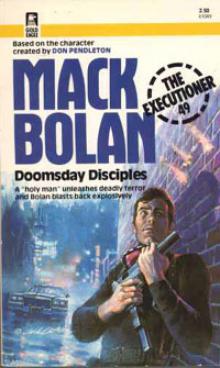 Doomsday Disciples te-49
Doomsday Disciples te-49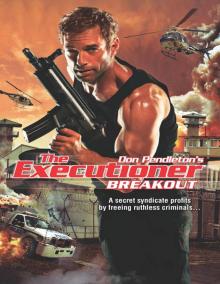 Breakout
Breakout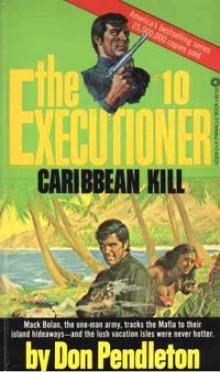 Caribbean Kill te-10
Caribbean Kill te-10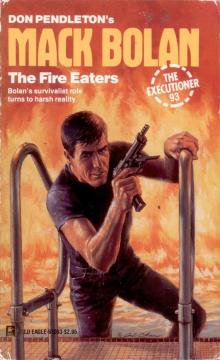 Fire Eaters
Fire Eaters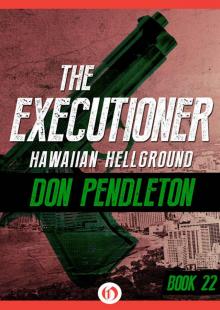 Hawaiian Hellground
Hawaiian Hellground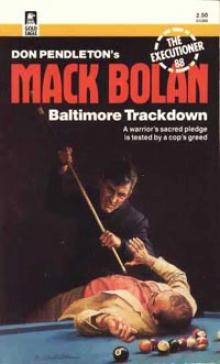 Baltimore Trackdown te-88
Baltimore Trackdown te-88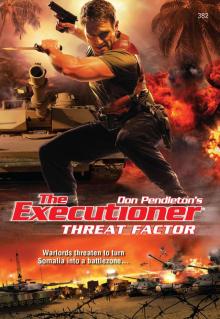 Threat Factor
Threat Factor Don Pendleton's Science Fiction Collection, 3 Books Box Set, (The Guns of Terra 10; The Godmakers; The Olympians)
Don Pendleton's Science Fiction Collection, 3 Books Box Set, (The Guns of Terra 10; The Godmakers; The Olympians)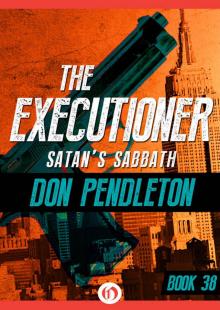 Satan’s Sabbath
Satan’s Sabbath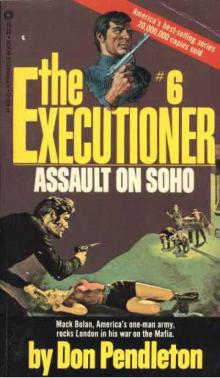 Assault on Soho te-6
Assault on Soho te-6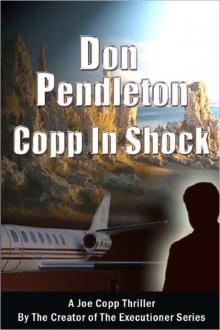 Copp In Shock, A Joe Copp Thriller (Joe Copp Private Eye Series)
Copp In Shock, A Joe Copp Thriller (Joe Copp Private Eye Series)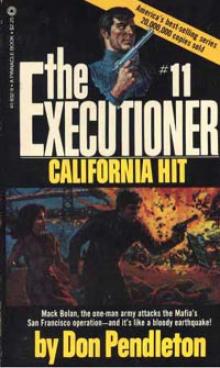 California Hit te-11
California Hit te-11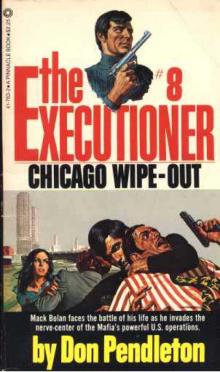 Chicago Wipe-Out te-8
Chicago Wipe-Out te-8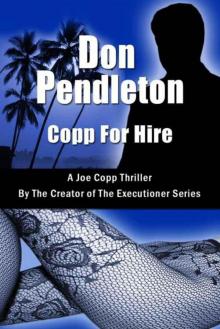 Copp For Hire, A Joe Copp Thriller (Joe Copp Private Eye Series)
Copp For Hire, A Joe Copp Thriller (Joe Copp Private Eye Series)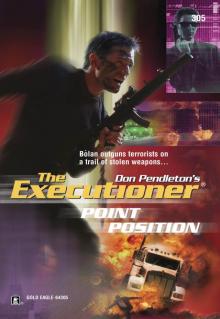 Point Position
Point Position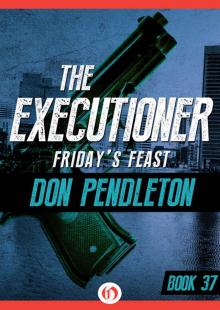 Friday’s Feast
Friday’s Feast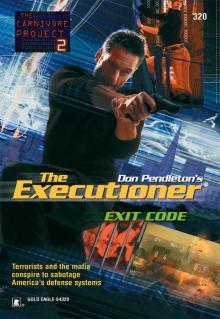 Exit Code
Exit Code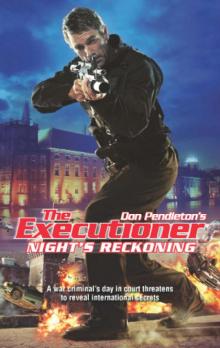 Night's Reckoning
Night's Reckoning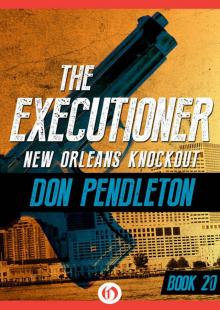 New Orleans Knockout
New Orleans Knockout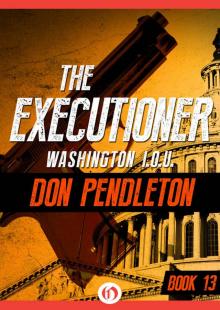 Washington I.O.U.
Washington I.O.U.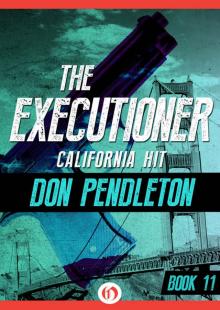 California Hit
California Hit Blood Vendetta
Blood Vendetta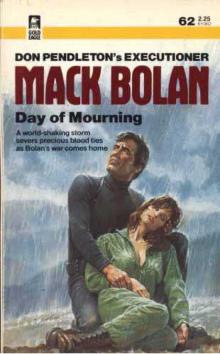 Day of Mourning te-62
Day of Mourning te-62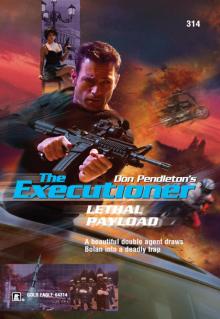 Lethal Payload
Lethal Payload Boston Blitz
Boston Blitz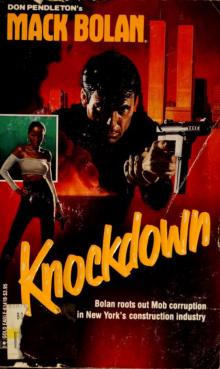 Knockdown
Knockdown Blood Sport te-46
Blood Sport te-46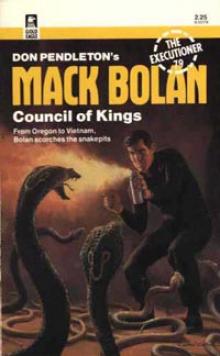 Council of Kings te-79
Council of Kings te-79 Terrorist Dispatch (Executioner)
Terrorist Dispatch (Executioner)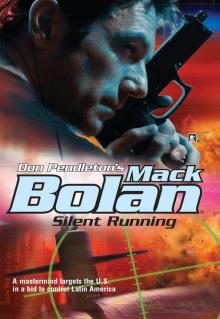 Silent Running
Silent Running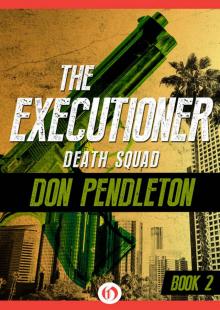 Death Squad
Death Squad Deadly Salvage
Deadly Salvage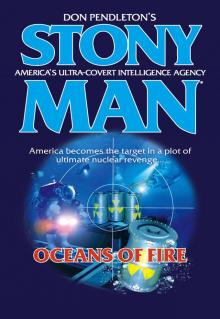 Oceans of Fire
Oceans of Fire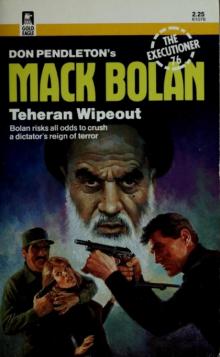 Teheran Wipeout
Teheran Wipeout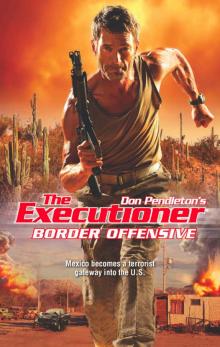 Border Offensive
Border Offensive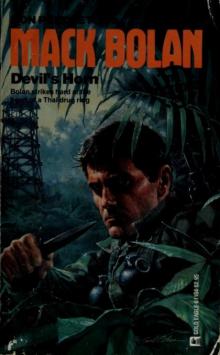 Devil's Horn
Devil's Horn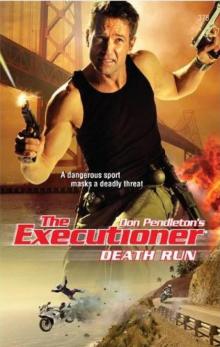 Death Run
Death Run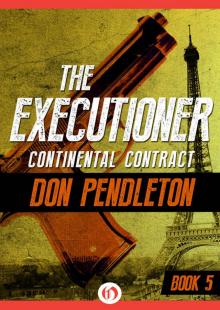 Continental Contract
Continental Contract Savage Deadlock
Savage Deadlock Eye to Eye: Ashton Ford, Psychic Detective
Eye to Eye: Ashton Ford, Psychic Detective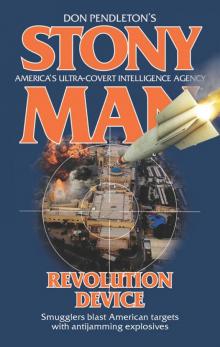 Revolution Device
Revolution Device Heart to Heart: Ashton Ford, Psychic Detective
Heart to Heart: Ashton Ford, Psychic Detective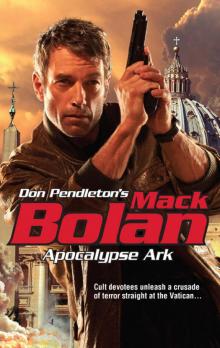 Apocalypse Ark
Apocalypse Ark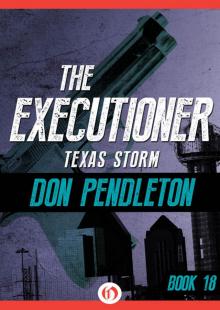 Texas Storm
Texas Storm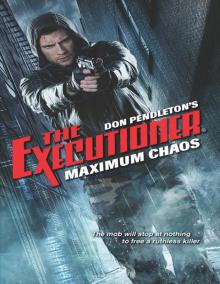 Maximum Chaos
Maximum Chaos Sensor Sweep
Sensor Sweep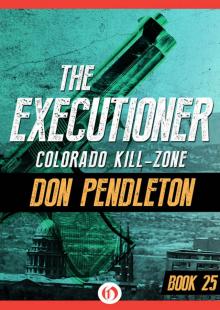 Colorado Kill-Zone
Colorado Kill-Zone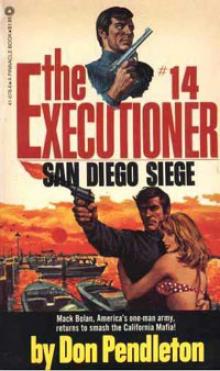 San Diego Siege te-14
San Diego Siege te-14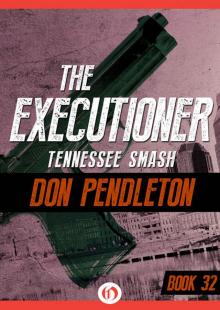 Tennessee Smash
Tennessee Smash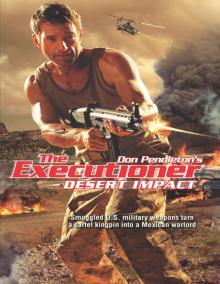 Desert Impact
Desert Impact Fire in the Sky
Fire in the Sky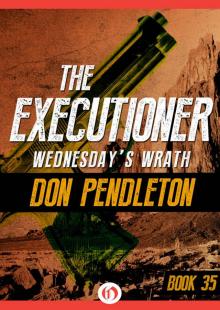 Wednesday’s Wrath
Wednesday’s Wrath Super Bolan - 001 - Stony Man Doctrine
Super Bolan - 001 - Stony Man Doctrine Chain Reaction
Chain Reaction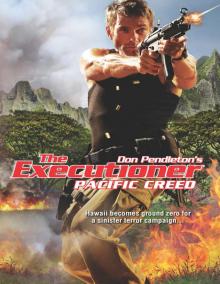 Pacific Creed
Pacific Creed Death List
Death List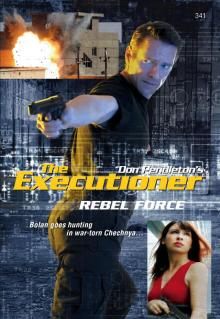 Rebel Force
Rebel Force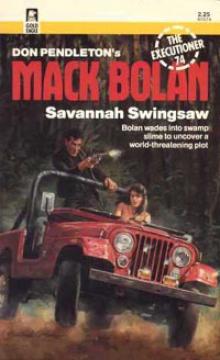 Savannah Swingsaw te-74
Savannah Swingsaw te-74 Heart to Heart
Heart to Heart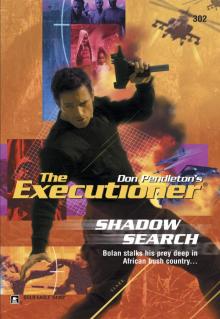 Shadow Search
Shadow Search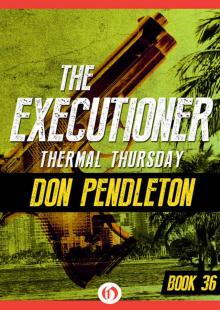 Thermal Thursday
Thermal Thursday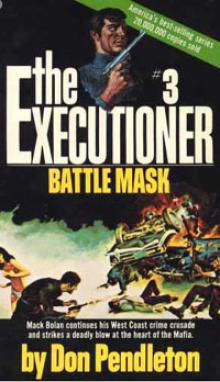 Battle Mask te-3
Battle Mask te-3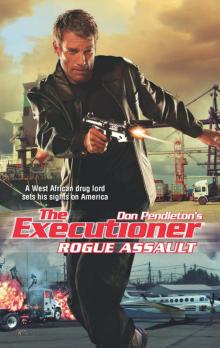 Rogue Assault
Rogue Assault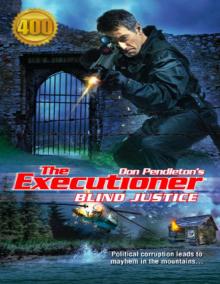 Blind Justice
Blind Justice Cold Fusion
Cold Fusion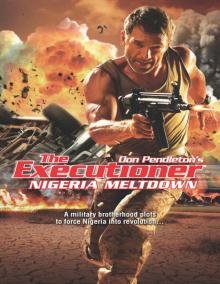 Nigeria Meltdown
Nigeria Meltdown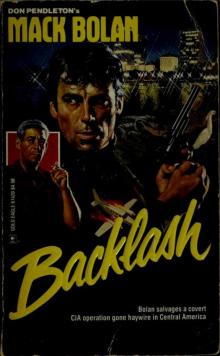 Backlash
Backlash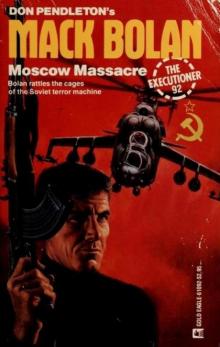 Moscow Massacre
Moscow Massacre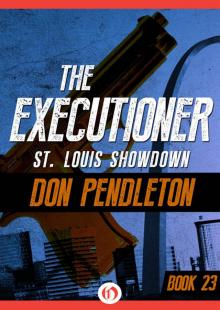 St. Louis Showdown
St. Louis Showdown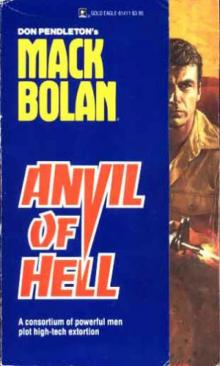 Anvil of Hell
Anvil of Hell Life to Life: Ashton Ford, Psychic Detective
Life to Life: Ashton Ford, Psychic Detective Amazon Impunity
Amazon Impunity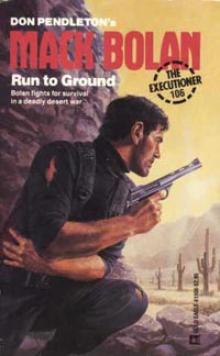 Run to Ground te-106
Run to Ground te-106 Save the Children te-94
Save the Children te-94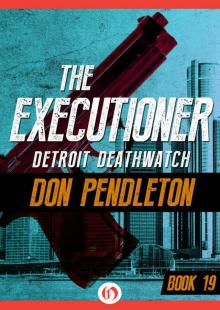 Detroit Deathwatch
Detroit Deathwatch Shadow Hunt
Shadow Hunt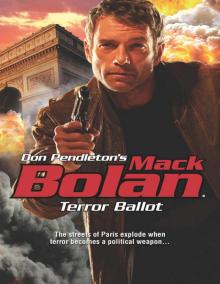 Terror Ballot
Terror Ballot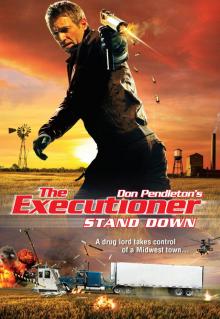 Stand Down
Stand Down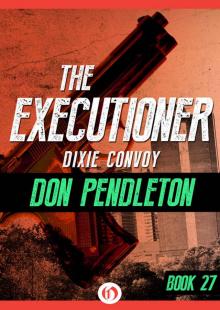 Dixie Convoy
Dixie Convoy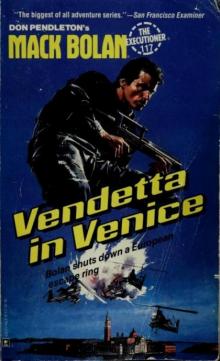 Vendetta in Venice
Vendetta in Venice War Against the Mafia
War Against the Mafia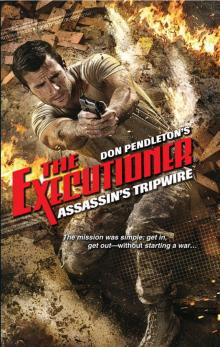 Assassin's Tripwire
Assassin's Tripwire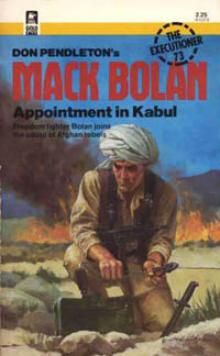 Appointment in Kabul te-73
Appointment in Kabul te-73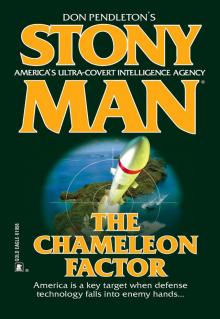 The Chameleon Factor
The Chameleon Factor Pirate Offensive
Pirate Offensive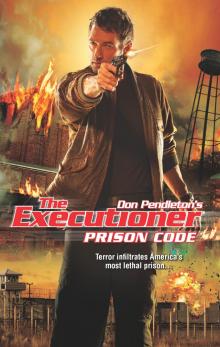 Prison Code
Prison Code Firebase Seattle te-21
Firebase Seattle te-21 Ground Zero
Ground Zero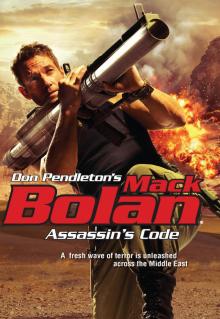 Assassin's Code
Assassin's Code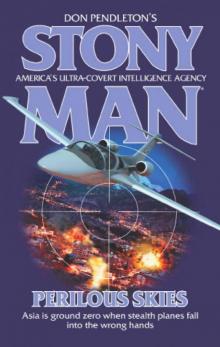 Perilous Skies (Stony Man)
Perilous Skies (Stony Man) Toxic Terrain
Toxic Terrain Canadian Crisis
Canadian Crisis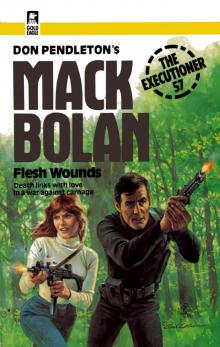 Executioner 057 - Flesh Wounds
Executioner 057 - Flesh Wounds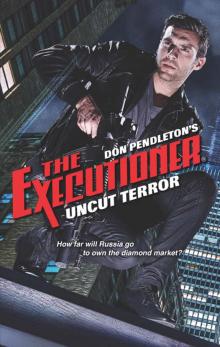 Uncut Terror
Uncut Terror War Everlasting (Superbolan)
War Everlasting (Superbolan)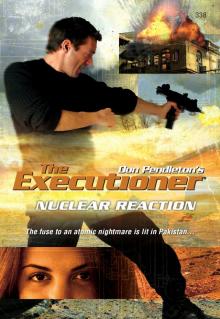 Nuclear Reaction
Nuclear Reaction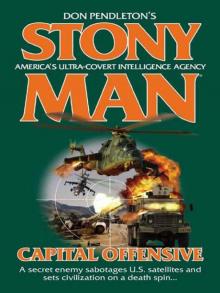 Capital Offensive (Stony Man)
Capital Offensive (Stony Man) Beirut Payback te-67
Beirut Payback te-67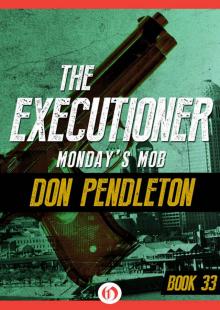 Monday’s Mob
Monday’s Mob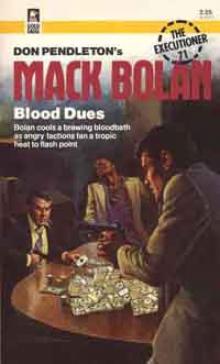 Blood Dues te-71
Blood Dues te-71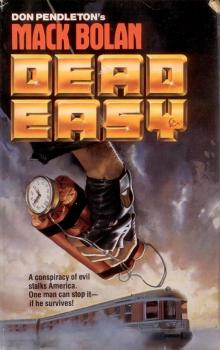 Dead Easy
Dead Easy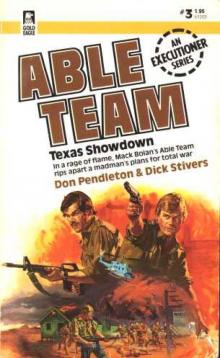 Texas Showdown at-3
Texas Showdown at-3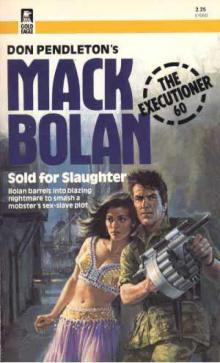 Sold for Slaughter
Sold for Slaughter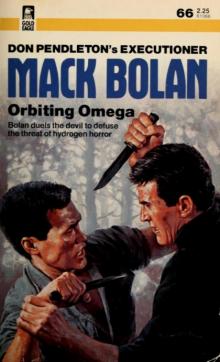 Orbiting Omega
Orbiting Omega Copp On Ice, A Joe Copp Thriller (Joe Copp Private Eye Series)
Copp On Ice, A Joe Copp Thriller (Joe Copp Private Eye Series) Rebel Blast
Rebel Blast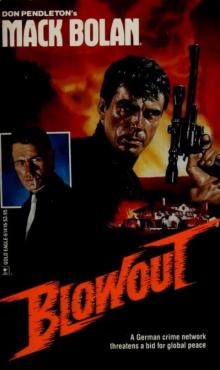 Blowout
Blowout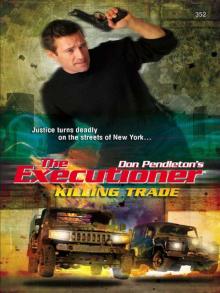 Killing Trade
Killing Trade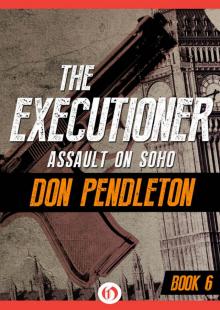 Assault on Soho
Assault on Soho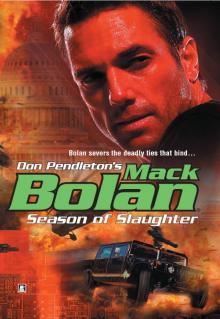 Season of Slaughter
Season of Slaughter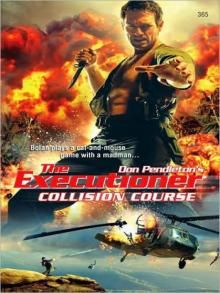 Collision Course
Collision Course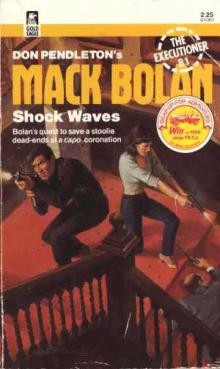 Shock Waves
Shock Waves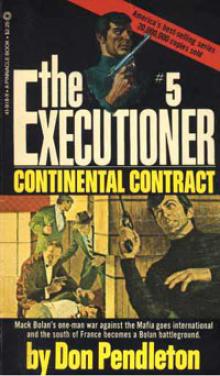 Continental Contract te-5
Continental Contract te-5 Dead Reckoning
Dead Reckoning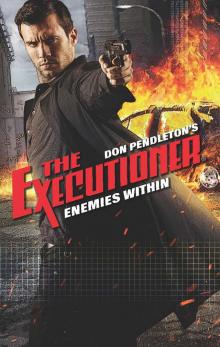 Enemies Within
Enemies Within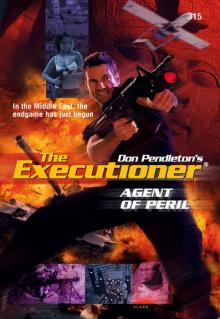 Agent of Peril
Agent of Peril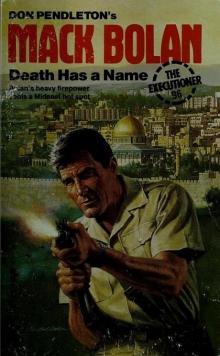 Death Has a Name
Death Has a Name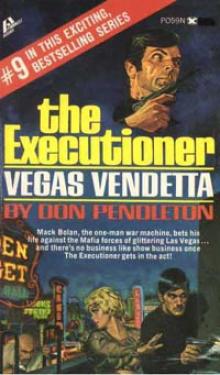 Vegas Vendetta te-9
Vegas Vendetta te-9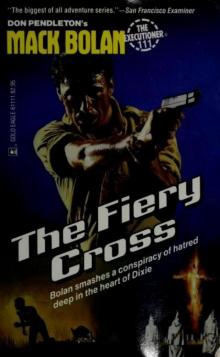 The Fiery Cross
The Fiery Cross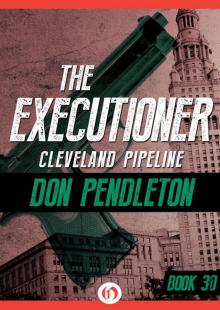 Cleveland Pipeline
Cleveland Pipeline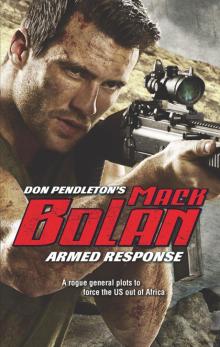 Armed Response
Armed Response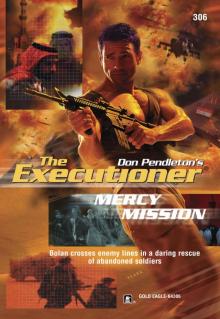 Mercy Mission
Mercy Mission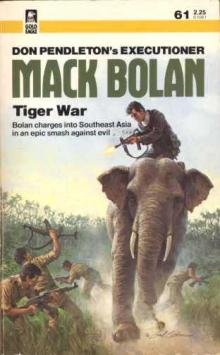 Tiger War te-61
Tiger War te-61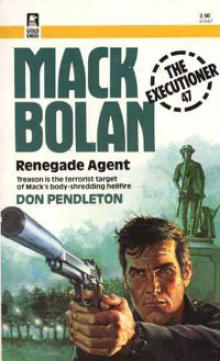 Renegade Agent te-47
Renegade Agent te-47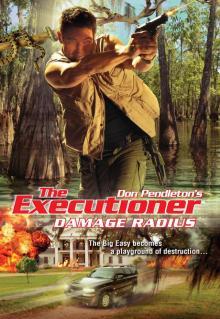 Damage Radius
Damage Radius Eye to Eye
Eye to Eye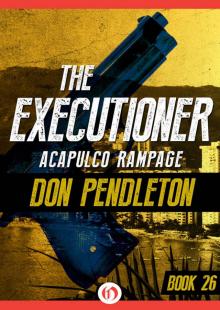 Acapulco Rampage
Acapulco Rampage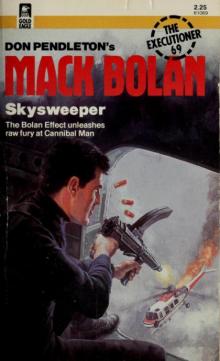 Skysweeper
Skysweeper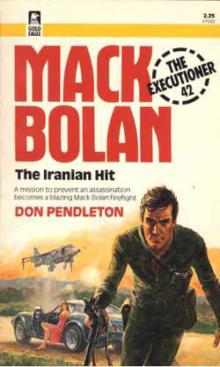 The Iranian Hit te-42
The Iranian Hit te-42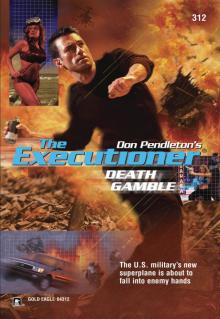 Death Gamble
Death Gamble Rebel Trade
Rebel Trade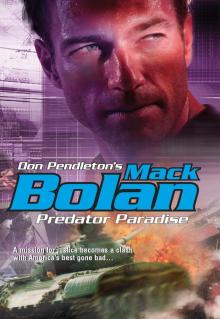 Predator Paradise
Predator Paradise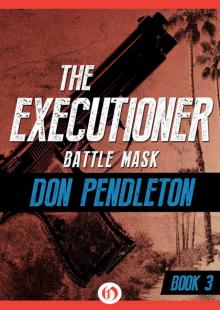 Battle Mask
Battle Mask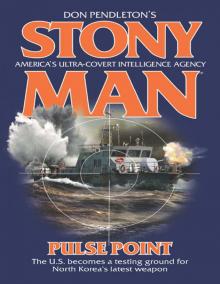 Pulse Point
Pulse Point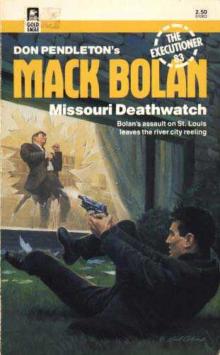 Missouri Deathwatch
Missouri Deathwatch Blood Tide
Blood Tide Missile Intercept
Missile Intercept Jersey Guns
Jersey Guns Hostile Force
Hostile Force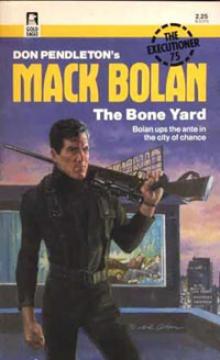 The Bone Yard te-75
The Bone Yard te-75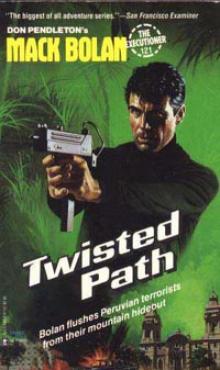 Twisted Path te-121
Twisted Path te-121 Mind to Mind
Mind to Mind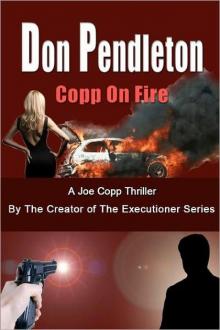 Copp On Fire, A Joe Copp Thriller (Joe Copp, Private Eye Series)
Copp On Fire, A Joe Copp Thriller (Joe Copp, Private Eye Series)